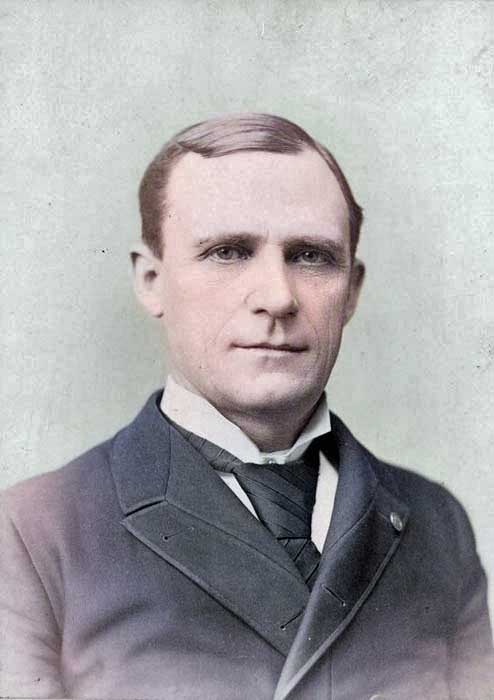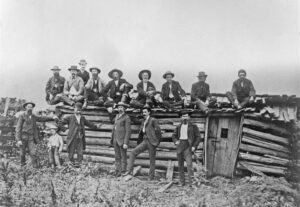Lyman Underwood Humphrey was the 11th governor of the State of Kansas.
Humphrey was born on July 25, 1844, in New Baltimore, Ohio. At the age of 17, he left high school in Massillon, Ohio, to enlist in Company I of the Seventy-sixth Ohio Infantry during the Civil War. The company was mustered into United States service on October 7, 1861. Later, he served in Companies D and E of the same regiment but was mustered out on July 15, 1865, as a first lieutenant in Company I. His regiment was initially attached to the First Brigade, First Division of the Fifteenth Army Corps, commanded first by General William T. Sherman and later by General John A. Logan. Humphrey participated in various significant engagements, including those at Fort Donelson, Chickasaw Bluffs, Jackson, Vicksburg, and Chattanooga in the fall of 1863, as well as numerous battles and skirmishes during the Atlanta Campaign in 1864. After the fall of Atlanta, he accompanied Sherman on the famous “March to the Sea“. He continued through the Carolinas, taking part in the Battle of Bentonville and witnessing the surrender of the Confederate Army under General Joseph E. Johnston.
After the war, he attended Mount Union College at Alliance, Ohio, for a short time and then entered the law department of the University of Michigan, where he graduated in 1867. He was admitted to the Ohio bar the succeeding year but soon afterward moved to Shelby County, Missouri, where he engaged in teaching and newspaper work.
In 1871, with his mother and brother, John E. Humphrey came to Kansas, where he settled in Independence, which he would call home for the rest of his life. He was one of the founders of the Independence Tribune and took an active part in the newspaper during its early years.
On Christmas Day in 1872, Humphrey married Amanda Leonard from Beardstown, Illinois. In 1873, he began practicing law and remained a lifelong Republican. He quickly became an influential figure within the Kansas Republican Party. In 1876, he was elected to represent his district in the State Legislature, where he served on the judiciary committee, one of the House’s most important committees. In 1877, Humphrey was elected Lieutenant Governor to complete the unexpired term of Melville J. Salter, who had resigned. The following year, he was elected to a full two-year term as Lieutenant Governor.
In 1884, he advanced to the State Senate. During the next session of the legislature, he introduced a resolution to remove the word “white” from the constitutional provision concerning the state militia. On July 26, 1888, Humphrey was nominated for governor by the Republican State Convention in Topeka. He won the election that November and, at the end of his first term, was re-elected, serving a total of four years in office.
Upon retiring from the governor’s office, he resumed the practice of law. In 1892, he was the Republican nominee for Congress in his district but was defeated by Thomas J. Hudson, the Populist candidate. Humphrey died on September 12, 1915, in Independence, Kansas.
©Kathy Alexander/Legends of Kansas, updated June 2025.
Also See:
See Sources.



